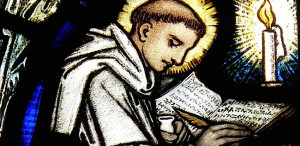Soul Food series part 1
“Living as Community”
Growth group devotion
(The goal of this devotion is for your growth group to come up with combined goals of living as a community this year. By the end, the growth group will have a “rule of faith” which will guide and structure what you do throughout the year…feel free to change up the material below to suit the needs of your group)
 Seeing as we’re beginning our series on hospitality and living in community, you might like to begin with sharing a meal together or something like that!
Seeing as we’re beginning our series on hospitality and living in community, you might like to begin with sharing a meal together or something like that!
To begin with, brainstorm examples of good community and bad community. What makes good community good, and bad community bad? (e.g. Ku Klux Klan vs. L’Arche)
Leaders might like to draw on this quote:
“We have all known the “long loneliness”…and we have learned that the only solution is love and that love comes with community.
“[But] the long loneliness has been the driving force behind the Ku Klux Klan, the Bloods and the Crips, the Khmer Rouge, and Interahamwe of Rwanda (just to name a few not-so healthy communities). The more deeply we feel the need for community in a fragmented world, the more likely we are to create exclusive communities where we feel safe. Wanting desperately to keep the little community we have, we are tempted to cast out anyone we think is not like us.” — Jonathan Wilson-Hartgrove
Watch the video clip below on what it means to live in Christian community.
Read Acts 2:42-47
With the Acts reading and the video clip in mind, what does Christian community look like for you?
Where do you fall short of the vision of community in Acts?
In what ways can safety be both good and bad for community (reference the above quote)?
 In almost every era community movements have arisen to ask, How can we live the way of Jesus faithfully in a new time? One constant movement is that of monasticism. Monasticism is an intentional attempt to live in Christian community. In recent years, a new monasticism has arisen, and these are the 12 marks (they’re printed here for your information, but you may or may not choose to use them):
In almost every era community movements have arisen to ask, How can we live the way of Jesus faithfully in a new time? One constant movement is that of monasticism. Monasticism is an intentional attempt to live in Christian community. In recent years, a new monasticism has arisen, and these are the 12 marks (they’re printed here for your information, but you may or may not choose to use them):
Marks of a New Monasticism
- Relocation to the abandoned places of Empire (moving to the margins of society)
- Sharing economic resources with fellow community members and the needy among us
- Humble submission to Christ’s body, the Church
- Geographical proximity to community members who share a common rule of life.
- Hospitality to the stranger (we talked about this on Sunday!)
- Nurturing common life among members of intentional community
- Peacemaking in the midst of violence and conflict resolution (we’ll be looking at this later in the series)
- Lament for racial division within the church and our communities combined with an active pursuit of a just reconciliation
- Care for the plot of God’s earth given to us along with support of our local economies
- Support for celibate singles alongside monogamous married couples and their children
- Intentional formation in the way of Christ
- Commitment to a disciplined contemplative life
Give it a go!
As your growth group begins for the year, come up with some “marks” of your unique community. What are you trying to achieve as a small group? How are you going to support one another, hold one another accountable etc.? You might like to use the Acts passage or the “12 Marks” above as a starting point.
To finish, commit this new “rule of faith” to God in prayer
